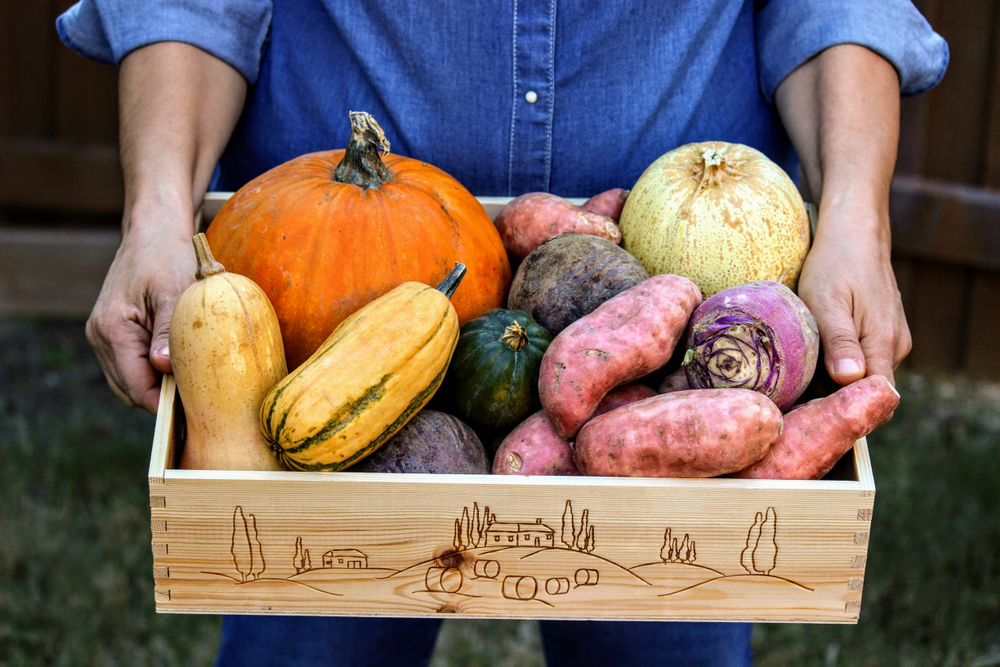
As the summer warmth begins to wane and the leaves start to display their vibrant hues, it's time for gardeners to shift their focus to fall gardening. Fall is an ideal season for gardening, with its cooler temperatures and abundant moisture creating the perfect conditions for a successful harvest. Whether you're a seasoned gardener or a novice, these fall gardening tips will help you make the most of this fruitful season.
Choose the Right Crops
Selecting the right crops for your fall garden is crucial. Some vegetables thrive in cooler temperatures and shorter daylight hours. Consider planting crops such as broccoli, cauliflower, Brussels sprouts, spinach, kale, lettuce, radishes, carrots, and beets. These vegetables are well-suited for fall's conditions and can often withstand light frost.
Plan and Prepare
Before you start planting, take time to plan your fall garden layout. Consider crop rotation to prevent soil-borne diseases and pests. Prepare your soil by amending it with compost or well-rotted manure to improve its structure and fertility. Clear out any summer crops that have finished producing and remove debris to minimize overwintering pests.
Extend the Growing Season
To maximize your harvest, consider using season-extending techniques. Cold frames, row covers, and cloches can help protect your plants from early frosts and provide extra warmth. These simple structures create a microclimate that allows you to continue growing tender crops well into fall.
Optimize Watering Practices
As the temperature drops and rainfall increases, you'll need to adjust your watering routine. Monitor the moisture levels of your garden regularly and water only when necessary. Aim for deep, infrequent watering to encourage strong root development. Mulching around your plants can help retain soil moisture and regulate temperature.
Monitor for Pests and Diseases
While fall gardening generally sees fewer pest and disease issues, it's still important to keep an eye out for potential problems. Regularly inspect your plants for any signs of infestation or disease. Early detection allows for more effective intervention, whether through manual removal, organic sprays, or other appropriate methods.
Harvest in a Timely Manner
Harvesting your crops at the right time is crucial for flavor and quality. Follow the recommended maturity dates for each vegetable variety. Some crops, like root vegetables, can be left in the ground longer as the cool temperatures improve their taste. Others, like leafy greens, should be harvested promptly to avoid bitterness.
Preserve the Harvest
As the fall harvest comes in, you might find yourself with an abundance of produce. Consider preserving your bounty through methods like canning, freezing, or drying. This will allow you to enjoy your homegrown goodness throughout the winter months.
Clean Up and Prepare for Winter
Once the harvest season is over, take time to clean up your garden. Remove any remaining plant debris and weeds to prevent pests from overwintering. Consider covering your garden beds with a layer of compost or mulch to protect the soil during the cold months and improve its fertility for the next growing season.
Reflect and Plan Ahead
As you wrap up your fall gardening activities, take some time to reflect on what worked well and what could be improved. Make notes in a gardening journal to remember your successes and lessons learned. Use this information to plan your next year's fall garden with even more success in mind.
Enjoy the Fruits of Your Labor
Finally, remember to take a moment to enjoy the results of your hard work. Whether you're savoring a homegrown salad or admiring the colors of your fall garden, relish in the satisfaction that comes from nurturing a garden through its productive cycle.
In conclusion, fall gardening is a rewarding endeavor that offers a second chance to cultivate a successful harvest. By choosing the right crops, planning carefully, extending the growing season, and following these tips, you'll be well on your way to reaping the rewards of a bountiful fall garden. Stop by Red's Home & Garden this season for fall seedlings, pollinators and advice from our knowledgeable staff!



